Let’s take a look at some curiosities about Seville Cathedral that are sure to surprise you. Over the centuries in the cathedral unusual events have occurred and important treasures have been accumulated that you have to know.
If you want more information about Seville Cathedral, remember that we have an extensive article about it. But if you still want more, we put at your disposal a free downloadable guide in pdf to accompany you on your visit to the Andalusian capital.
Downloadable guide only available in Spanish
What you will find here
THE VISIGOTH ABLUTIONS BASIN
Let’s move on to the first of the curiosities of Seville Cathedral. The current fountain in the courtyard of the Orange Trees has a very old part. This is the upper terrace belonging to the old mosque. It was here that the Muslims of Seville used for ablutions (purification) prior to prayer. However, the origin of this piece is even earlier, in fact, according to several researchers, it dates from the Visigothic and therefore Christian period.

Pila visigoda de la Catedral de Sevilla antes de su restauración.
THE BIBLIOTECA COLOMBINA
In addition to the usual ecclesiastical archives that large churches usually have, the Cathedral of Seville houses a library of famous origin. This is the collection of Don Hernando Colón, son of the navigator Christopher Columbus. In addition to the 100,000 volumes of the ecclesiastical chapter, 6,000 more works were added by Don Hernando. Of these, around 1000 are incunabula and another 1000 manuscripts. Undoubtedly a source of knowledge for studying the history of the 16th century. Some consider it to be the most important Renaissance library in Spain. Another of the curiosities of this place is that it houses the tombstone of Christopher Columbus’ tomb in Havana.
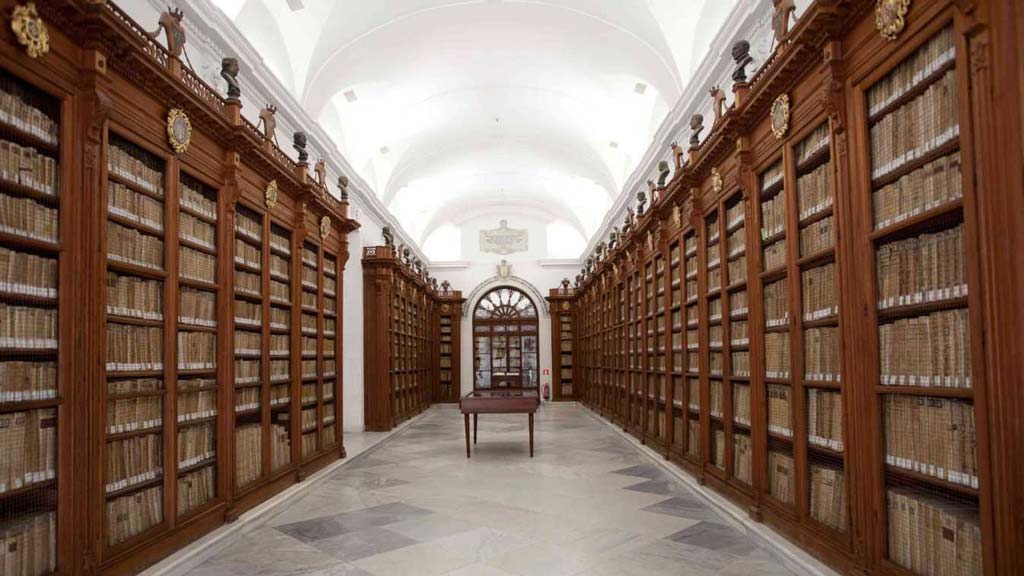
Columbian Library in the east gallery of the Cathedral of Seville (© Catedral de Sevilla).
An aside
TO SHOW YOU OUR GUIDED TOURS IN SEVILLE
THE COCODRILE OF THE CATHEDRAL OF SEVILLE
Although it may seem strange to you, in the 13th century there was a Nile crocodile in the cathedral. An Egyptian sultan asked Alfonso X for the hand of his daughter Berenguela with a series of exotic gifts. Among them were a giraffe and a crocodile, both alive! The Castilian king refused the request but the Sultan’s gifts remained in Seville.
However, all this is nothing more than a legend based on the visit of the embassy of the Mamluk sultan of Egypt Baibars I. The Egyptians were accompanied by several exotic animals: a giraffe, a crocodile and a zebra, among others. Some of the animals did indeed stay here, but they soon died because of the difference in climate. As for the crocodile, once it was dead it was stuffed and hung with other objects from the ceiling near the door beneath the foot of the Giralda.
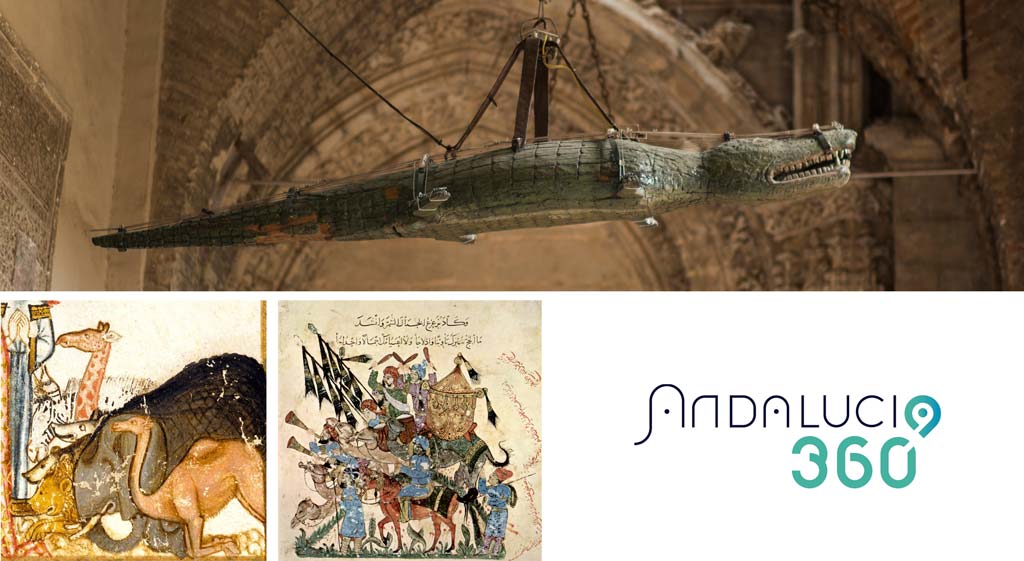
Above: Crocodile of the Cathedral of Seville (© Turismo Andaluz). Left: illustration of the Cantiga 29 in Codex Rico. Centre: Caravan of pilgrims in Ramleh. Maqamat of al-Hariri, fol. 94v. Al-Wasiti.
The reptile that you will see on your visit is a wooden copy that could be from the 17th century or later, as Diego Ortiz de Zúñiga explains that the skeleton of the crocodile was still in the mid-17th century. It is popularly known as “El Lagarto” (The Lizard) and gives its name to the door next to which it stands.
This is undoubtedly one of the most striking curiosities of Seville Cathedral
THE LARGEST GOTHIC CATHEDRAL IN THE WORLD
Continuing our tour of the curiosities of Seville Cathedral, we could not avoid the most named. It is indeed not the tallest, but it is the gothic temple with the largest surface area in Europe and the world. In fact, it is the third largest Christian church in the world after St. Peter’s Basilica in the Vatican (20,000 m²) and the Basilica of Our Lady of Aparecida in Brazil.
With a floor area of 11,520 m², the cathedral came to be known as Magna Hispalensis, i.e. “Great Seville“. In fact, this was the name of one of the city’s most important recent exhibitions.
In order not to generate controversy, at this point we will indicate that the rankings vary between whether it is a cathedral or simply a church, whether the surface area is built or only covered, etc.
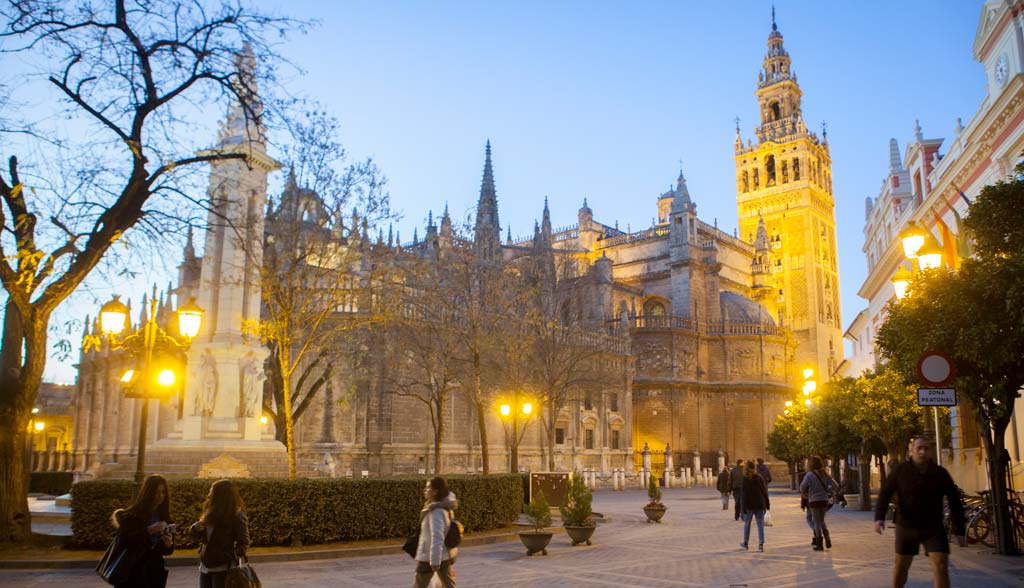
Exterior of the enormous Cathedral of Seville (© Turismo Andaluz).
AN IMMENSE CATALOGUE OF ARTWORKS
On the main altarpiece alone, we have already mentioned that there were more than 200 sculptures. Inconceivable are the paintings and sculptures that are concentrated in the Royal Chapel. Walking through its naves and chapels we find works of goldsmithery, ancient stained glass windows, marvellous grilles, embroidered fabrics, colossal paintings, etc.
Wherever we go, whether in the sacristy, the crypt, the entrance doors, the Chapter House, etc. We will see everything completely decorated with pieces ranging from the Ancient Ages to the 20th century. Although it may seem strange, the cathedral also contains some Roman, Visigothic and Islamic tombstones. The Christian works span the Gothic, Renaissance, Baroque and even Neoclassical styles.
If we go around the outside we continue to find sculptures. We will have to stop especially at gates such as the Perdón or the Asunción. The latter concentrates more than 40 figures carved in stone.
To top it all off, the temple has a Cathedral museum full of religious works. Reliquaries, tunics or paintings by Murillo and Zurbarán, among others, is what you can see during your visit.
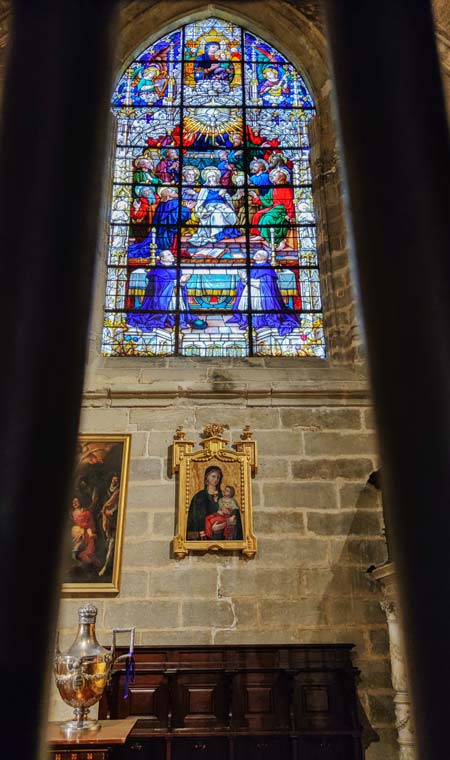
We have chosen a simple photo of a corner of the Cathedral of Seville, to illustrate the quantity and variety of works of art in the temple (Author: Nazrin Babashova).
Let’s continue with more curiosities of the Cathedral of Seville
CONCRETE SCULPTURES
That’s right, although it may seem strange to you because of the lack of nobility of the material, in Seville Cathedral there are cement sculptures. The main doorway, that of the Assumption, was completed between the 19th and 20th centuries. At that time it was more than common to use the famous Portland cement, a material with a stony appearance and a greyish tone invented in 1824. However, its use as a sculptural material was not at all common. The lack of resources of the Cabildo conditioned the choice, which was surrounded by a great deal of criticism. Can you tell which sculptures on the façade of the Assumption are made of Portland cement?
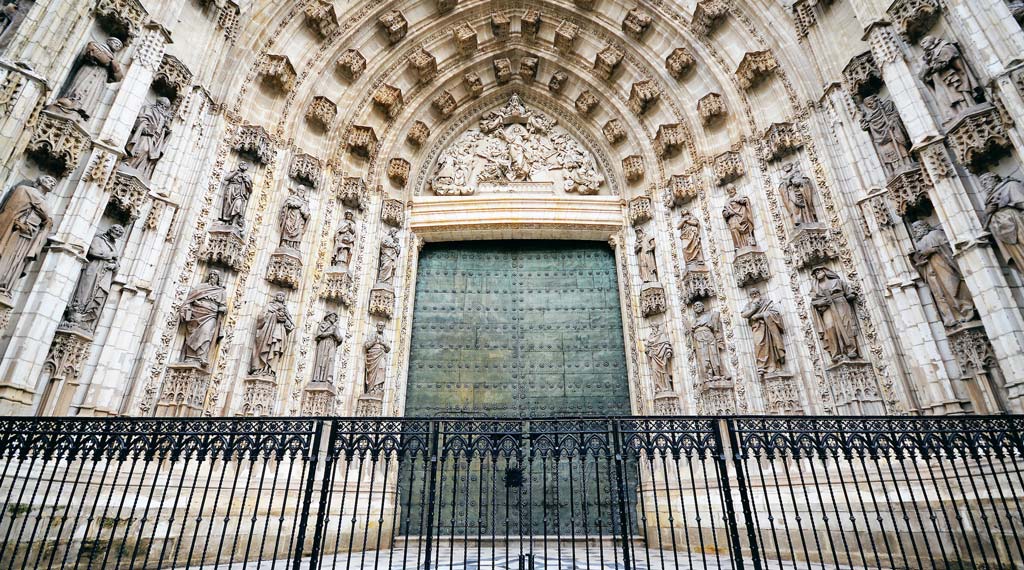
Cement sculptures on the door of the Assumption in the Cathedral of Seville (Author: Łukasz Maźnica).
THE BREATHING CATHEDRAL
During the day Seville Cathedral rises up to 3 centimetres, as the day draws to a close it descends again the same as it has risen. Every day this happens with the pillars and the highest vaults of the Sevillian temple. A priori it is something more or less obvious, as the dilation of materials is something usual, however limestone and calcarenite are stone materials that do not dilate. This curiosity of the Seville cathedral was discovered relatively recently and initially the worst was thought to be a threat of ruin. But the investigations concluded that this situation was caused by the set of elements that make up the cathedral: floors, vaults with different materials as we will see below, pillars, etc.
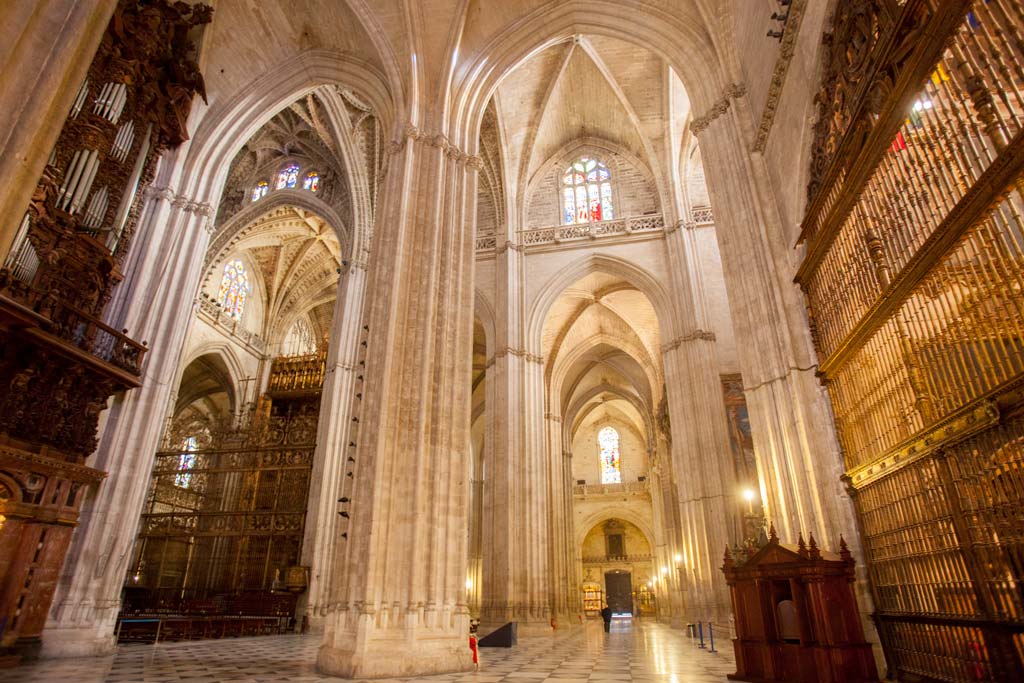
Huge vaults over thick pillars of the Cathedral of Seville.
PITCHER VAULTS
When we look up inside Seville Cathedral we see spectacular stone vaults. They will probably seem extraordinarily strong and massive, and they are, but they are filled with jars and other large ceramic vessels. Occasionally, faults or pottery waste, i.e. unusable pottery, were used. This was done to considerably lighten the weight of the roofs. In reality, this curiosity is not exclusive to Seville Cathedral, as it is a constant construction technique in Gothic buildings. In fact, it is not even a Gothic innovation, as it has been used since at least Roman times.
We do not have any images to show, but if you want to know more about it, here is a article by Pina López Torres very interesting.
A UNKNOWN PLANE
To finish this post on curiosities of Seville Cathedral we have saved the plan of the cathedral discovered in the 21st century. It is not the original plan, but it is a copy dated at the end of the 15th century, when the temple was being built. The plan was in a convent in the Basque Country, the convent of Bidaurreta.
In 2008 the historian Begoña Alonso Ruiz located it. Not only is it an essential piece for understanding the history of Seville Cathedral, but there are few medieval cathedrals that can boast of preserving a floor plan from the time of its construction.
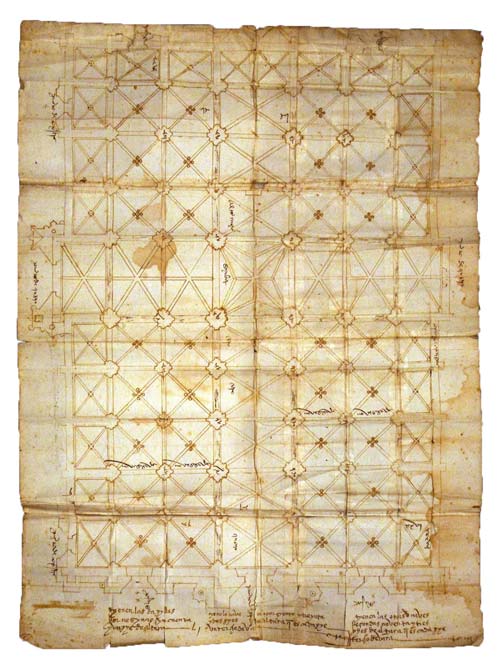
An old plan of the Cathedral of Seville discovered by Begoña Alonso Ruiz.
These curiosities about the Cathedral of Seville and many more are told in our guided tours of Seville
The Cathedral of Seville / What to see in Seville /
Illustrious personalities buried in the Cathedral of Seville /
/ Sevilla with Charm



